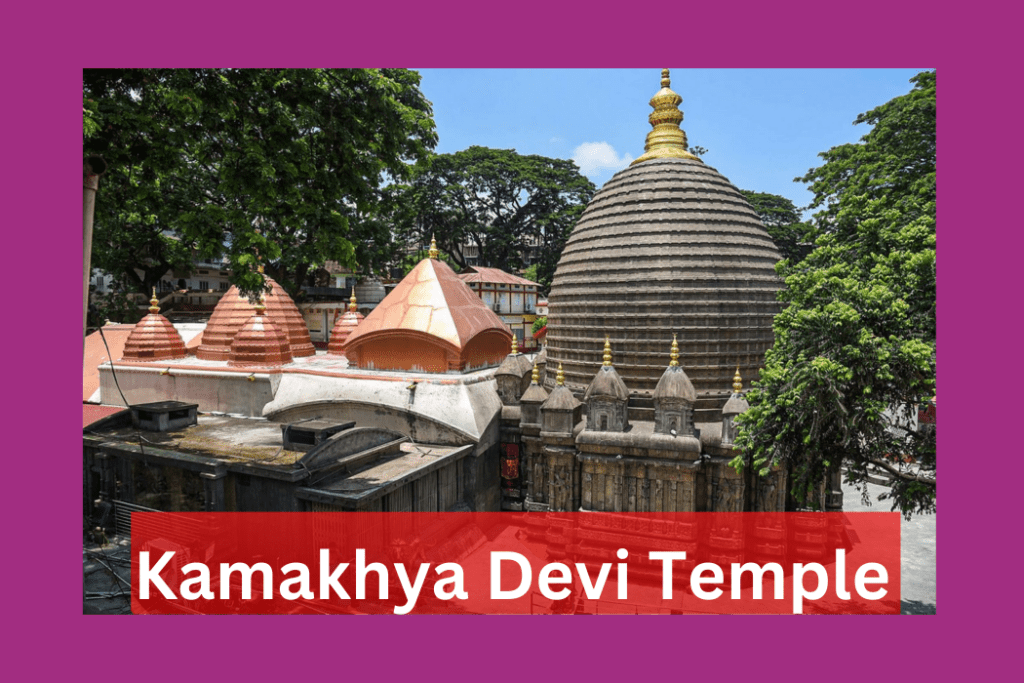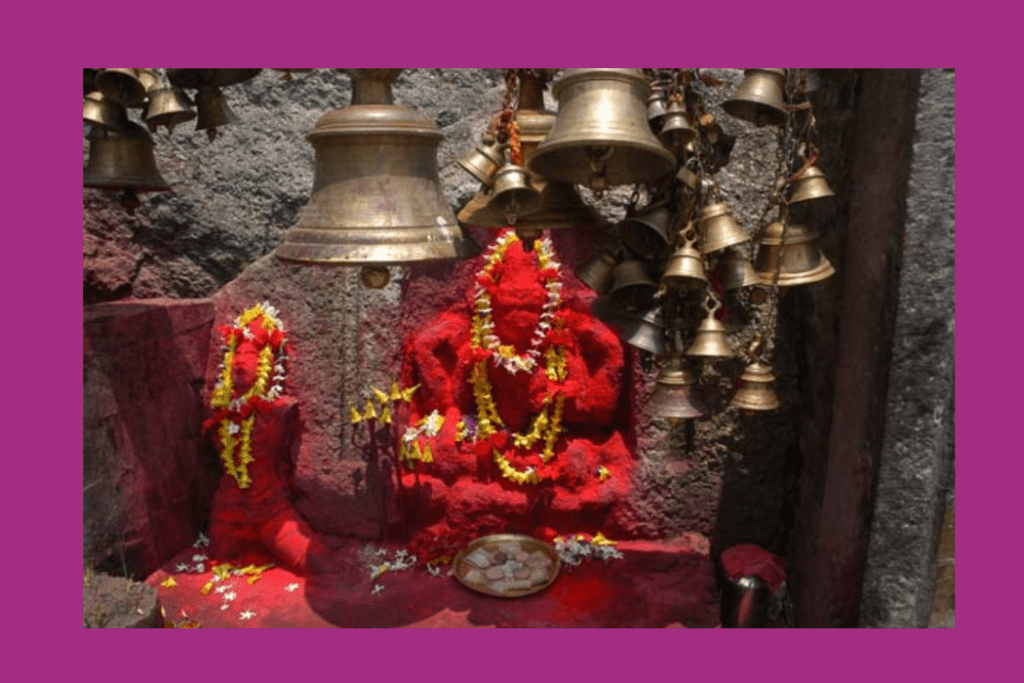Kamakhya Devi Temple, Assam: History, Significance, and Travel
In this blog post, we discuss the historical importance of the sacred Kamakhya Devi Temple. Read this Blog to know more.

The Kamakhya Devi Temple, devoted to Goddess Kamakhya, is among the 51 Shakti Peeths. In contrast to regular temples, an idol of the goddess is absent in this place. Instead of that, a Yoni Kund adorned with flowers acts as the main focus of devotion. The most astonishing aspect is the constant flow of water from this Kund. The Kamakhya Temple is situated at the peak of Nilachal Hill in Guwahati, Assam.
An ancient Indian temple holds great significance in the spiritual history of our nation. Individuals seeking spiritual guidance or knowledge travel from various corners of the globe to visit this temple.
In this blog post, we discuss the historical importance of the sacred Kamakhya Devi Temple.
| Participate in online puja organised by VAMA(Get the puja done with your name and gotra) | |
| Name of Puja | Temple (Place) |
| Rin Mukti Puja | Rin Mukteshwar Mahadev Temple (Ujjain) |
| Shani Sade Sati | Shani Shingnapur Devsthanam ,Maharashtra |
| Rahu Grah Shanti Puja | Jarkutinatheshwar Mahadev Temple,Prayagraj |
| Bal Gopal Santaan Prapti Puja | Vrindavan Dham Kshetra ,Vrindavan |
| Sunderkand Path Rasraj Ji Maharaj ke sath | Lete Huye Hanuman Mandir, Prayagraj |
Read this Blog to know about Alopi Devi Temple – Alopi Devi Mandir, Prayagraj: History, Significance, and Travel
History and Story behind Kamakhya Devi Temple
The Kamakhya Temple’s history enhances its charm and distinctiveness. This historic temple has been standing for more than a thousand years, with stories of its beginnings captivating all visitors. The temple is closely linked to the esteemed deity Kamakhya.
As per legend, it is believed that the temple is the spot where Goddess Sati’s yoni fell following Lord Shiva’s Tandava. This story shows a strong link between how things are created and spirituality connected.
Kamakhya Temple is a very special and pure place where the spiritual and historical things come together. Every year, the temple celebrates the menstruation of the Goddess. Devotees worship the Yoni Kund itself, considering it a manifestation of the Goddess.

Architecture of Kamakhya Devi Temple
Within the innermost section of the temple lies a unique stone in the form of a yoni. This stone symbolizes Maa Kamakhya’s powers and divinity, and is worshipped by people with great devotion.
The temple’s construction combines elements from Assam’s style and other ancient styles, reflecting the state’s influence on its design. The beehive-like dome and overall design hold significant meaning in Hindu culture, in addition to being aesthetically pleasing.
Many various plants and animals surround the temple. If you enjoy observing birds and discovering the outdoors, you may spot some fascinating birds and butterflies. This turns the temple into a unique sanctuary for both the religious and nature enthusiasts.

Spiritual Significance and Festivals
Special festivals such as Ambubachi Mela, Durga Puja, and Manasha Puja are observed at the Maa Kamakhya Temple in Assam.
The Ambubachi Mela is an amazing yearly celebration held at the Kamakhya Temple. It represents the annual menstruation cycle of the goddess Kamakhya.
During this time frame, the temple remains closed for three days because it is thought that Mother Earth has become polluted. After three days, the temple opens again and the goddess receives a bath and is worshipped.
The Kamakhya Devi Temple celebrates a grand festival for Goddess Durga, symbolising the divine feminine power, during Durga Puja. It symbolises the victory of moral goodness over misdeeds.
Manasha Puja is a ceremony honouring Goddess Manasha, the divine figure linked to snakes, performed to ward off snake attacks and enhance fertility. The festival involves particular prayers and rituals to receive the blessings of Goddess Manasha and is significant for the Assamese people.
How to Reach the Kamakhya Devi Temple?
Via Air: LGBI Airport is the nearest airport to Kamakhya Devi Temple, located around 20 kilometres away. The convenient location of LGBI near major Indian cities makes it an ideal starting point for your pilgrimage.
Upon arrival at LGBI, there are several options available for transportation to the temple. In Guwahati, you can easily access Ola and Uber apps to reach the temple. Confirm that your internet connection is functioning properly and install the app before booking to ensure a smooth experience.
By Train: Guwahati Junction serves as a major railway hub in Northeast India, connecting the city to various parts of the nation via train. Choosing to take a train journey and disembarking at Guwahati Junction would be ideal.
Travelling from the Station to the Temple: The distance from the train station to the temple is around 8 kilometres. You can easily locate taxis and auto-rickshaws outside the station to conveniently transport you to the temple.
Via Land: Connectivity in Guwahati is well-supported by national highways, allowing easy access by bus.
Assam State Transport Corporation (ASTC) runs routine bus routes from different cities in Assam to Guwahati, including both state-owned and private buses. Furthermore, multiple private bus companies provide connectivity between states.
Frequently Asked Questions
What is the significance of Kamakhya Devi Temple?
Special festivals such as Ambubachi Mela, Durga Puja, and Manasha Puja are observed at the Maa Kamakhya Temple in Assam. The Ambubachi Mela is an amazing yearly celebration held at the Kamakhya Temple. It represents the annual menstruation cycle of the goddess Kamakhya. During this time frame, the temple remains closed for three days because it is thought that Mother Earth has become polluted.
What is the story of Kamakhya Devi Temple?
The Kamakhya Temple’s history enhances its charm and distinctiveness. This historic temple has been standing for more than a thousand years, with stories of its beginnings captivating all visitors. The temple is closely linked to the esteemed deity Kamakhya. As per legend, it is believed that the temple is the spot where Goddess Sati’s yoni fell following Lord Shiva’s Tandava.
How is the Architecture of Kamakhya Devi Temple?
Within the innermost section of the temple lies a unique stone in the form of a yoni. This stone symbolises Maa Kamakhya’s powers and divinity, and is worshipped by people with great devotion. The temple’s construction combines elements from Assam’s style and other ancient styles, reflecting the state’s influence on its design.
Want to know about Bhimashankar Jyotirlinga? Read this blog – Bhimashankar Jyotirlinga, Pune: History, Significance, and Travel




